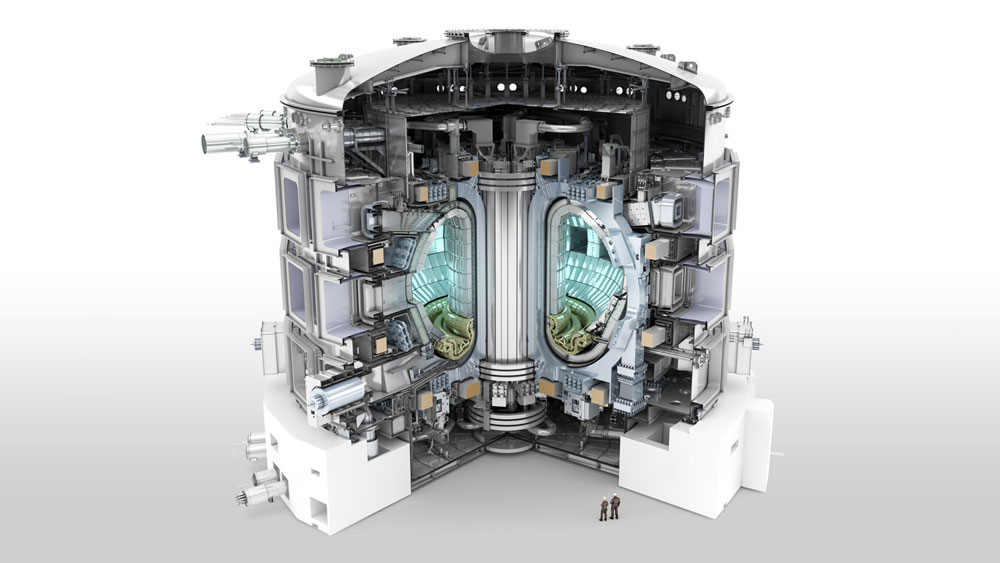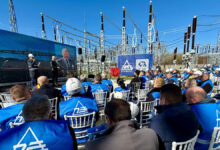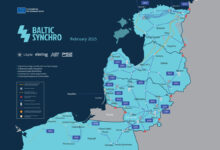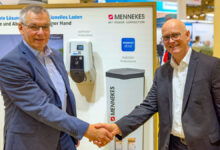Fusion Energy Technology for a Greener and More Sustainable Energy Mix
First Magnet in the History of ITER
Fusion, the energy source of the sun and stars, could be the energy of the future. It has the potential to provide a safe, cost-efficient and sustainable solution to European and global energy needs. That is why the EU is part of one of the most ambitious energy projects in the world, ITER, a unique project to build the world’s biggest fusion machine. Although a purely experimental device, ITER will help advance fusion energy technology for a greener and more sustainable energy mix. By fostering innovation and international collaborations, the project creates economic growth and job opportunities while putting the EU in the lead of global fusion research.
A huge magnet, the superconducting Toroidal Field coil was delivered and arrived at is final destination in Cadarache, in the South of France. The arrival of the massive component (17 metres high, weighing 310 tonnes) has set two records: this is the first magnet delivered in the history of the ITER project and the biggest component so-far handed over by Europe.
“This achievement results from 12 years of work involving more than 700 people and at least 40 companies. Many factors have made this possible: vision in developing the best procurement strategy and interfaces among suppliers; competence in defining the correct technical solutions; cooperation between the different parties to tackle issues in manufacturing the most complex magnet to date; and last but not least, passion, perseverance and the full commitment of a highly qualified team. Without any of these elements, it would have been impossible to complete this long journey,” Alessandro Bonito-Oliva, F4E Programme Manager for Magnets, elaborated on the importance of this important milestone for Europe.
The ITER Device
Millions of components will be integrated in the biggest fusion device. The assembly of the device will be one of the most complex engineering operations. Each ITER Party is responsible for the manufacturing of distinct pieces of equipment. Europe is responsible for almost half of the components of the machine, while the remaining six Parties will have to deliver equally the rest. In Europe, their fabrication is the result of the collaboration between F4E, industry and research laboratories.
Key figures
- 24 m high
- 30 m wide
- 23,000 tonnes
- Number of components: 1,000,000
- Plasma volume: 830 m³
Background – Participation of the EU in ITER
- 7 June 2018: The Commission adopted a proposal for a Council decision on EU funding ITER for the period 2021-2027.
- 17 April 2018: The Council of the EU adopts its conclusions on the communication and reaffirms its continued commitment to the ITER project.
- 14 June 2017: The Commission revises the EU contribution to ITER, in accordance with the baseline.
- 15-16 June 2016: The ITER Council adopts a new baseline of the project and sets the earliest technically available date for the first operation of the machine at December 2025.
- 1 June 2007: The Broader Approach agreement, signed jointly by Japan and the EU, enters into force.
- 19 April 2007: The European body Fusion for Energy (F4E) is established for a period of 35 years.
- 21 November 2006: The ITER agreement is signed by China, South Korea, the United States, India, Japan, Russia and the European Atomic Energy Community (Euratom).
The road to fusion
Fusion science and technology have a long history in Europe and their development was accelerated from 1957 by the Euratom Treaty, which established a European atomic energy community. Since then, European fusion research is better coordinated to make sure that the technology moves forward, as quickly as possible.
European fusion laboratories collaborate through a consortium called EUROfusion, in line with the long-term strategy set out in the European research roadmap to the realisation of fusion energy.
ITER is of key importance in the roadmap, particularly as it aims to prove the scientific and technological feasibility of fusion as a future energy source. Although ITER itself will not produce electricity, DEMO – the device that will follow – will likely model a real future fusion power plant and produce electricity. This in turn will pave the way for future commercialisation and use of fusion power, possibly from 2050 onwards.
ITER governance and funding
The project stems from the ITER agreement, which was signed by China, Euratom (represented by the European Commission), India, Japan, South Korea, Russia and the USA in 2006. Together, they govern the ITER Organization, which is responsible for constructing and managing the project.
Members have a domestic agency that manages their contributions. The EU’s domestic agency is called Fusion for Energy.
The European contribution to ITER is funded from the EU budget; for the period 2021 to 2027 the European Commission has proposed to contribute EUR 6.07 billion to ITER.
The Broader Approach
In parallel to their collaboration on the ITER project, the EU and Japan are working together on three fusion-related projects.
The projects, all located in Japan, aim to complement ITER and accelerate the development of fusion power. The work includes the construction of an advanced fusion device, research into durable materials for use in future devices, and the setting-up of a remote operation room for ITER.
The cooperation was established by the signature of the Broader Approach Agreement in 2007 and a new, second phase of activities is being launched in 2020.
Fusion for Energy and industry engagement
The EU’s domestic agency, Fusion for Energy, established in 2007 and based in Barcelona, Spain, is responsible for delivering Euratom’s contribution to the ITER project and the Broader Approach, and contracts businesses and research organisations in the EU to achieve this.
By participating in ITER, the EU makes substantial investment in European industry. More than EUR 4 billion has already been invested in this way, which has had a strong and positive impact on the European economy in terms of producing economic growth and boosting employment.
Moreover, individual businesses that have produced components and provided services for ITER have reported being able to expand their facilities, upgrade equipment, and hire staff.






